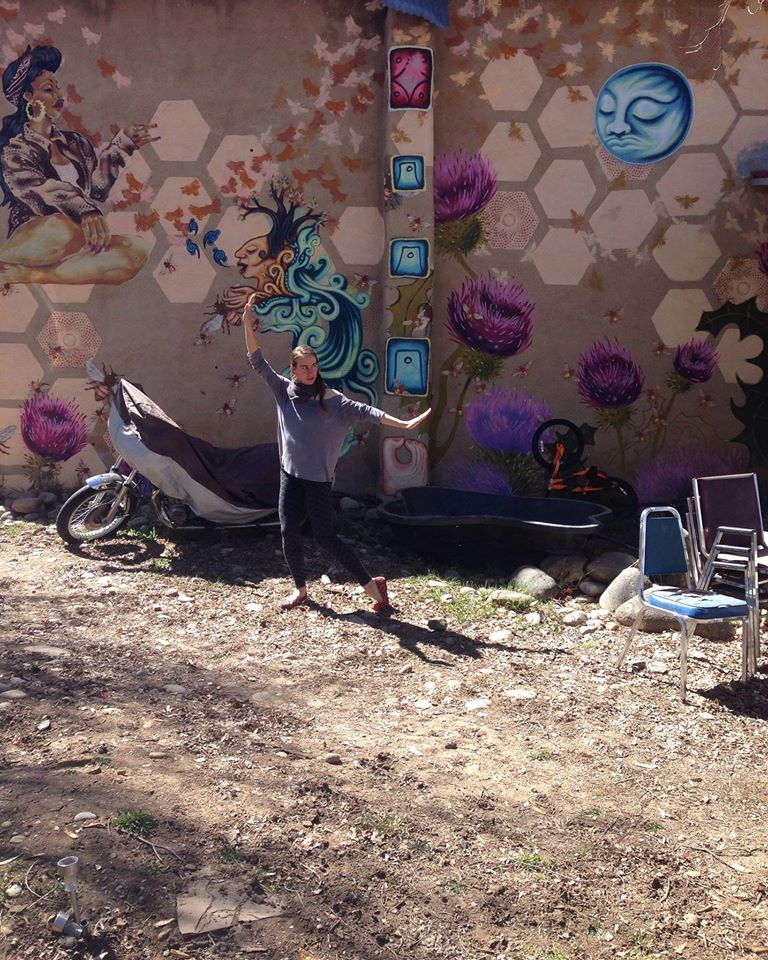Viable Rural Alternatives for Dance
BY EMMALY WIEDERHOLT
When I was living in San Francisco and Los Angeles, how many times did I hear friends wax philosophic about someday living in nature on a nebulous farm or cabin, or go camping and Instagram the lake and trees, or just complain about traffic? I’ll tell you: lots of times. I was one of them. Okay, I never Instagrammed trees, but I was one of those city-dwellers who’d had enough of mutilated pigeons and weird smells. And now I don’t live in a big city anymore. Now I live in a little mountain city where I can see stars and vistas because there’s not light or air pollution.
But why do so many people stay in these megalopolises? The answer, at least for many artists, is obvious. Opportunities. Performance spaces. Peers. Classes. The sense you’re in the thick of it. When I lived in San Francisco, I fed on that energy… until that energy felt like it wasn’t leading me where I wanted to go.
I have a dream of building a sustainable green live-work-dance-write-love space in a small valley in northern New Mexico. And it feels like a confusing pipe dream. Does anyone who lives there care one iota about dance? How am I going to make it work financially?
I like to sit and conjure answers to this puzzle.
This past March, my dear friend Malinda LaVelle had a choreographic residency at the Peñasco Theatre in Peñasco, New Mexico, a town of about 1,200. And I was her dancer. We stayed in a little apartment connected to the theater. And aside from a few community classes throughout the week, we had complete access to the small adobe theater.
The first day we spent seven hours working. The second day we must have spent 12 or 13 hours in the theater. By the third day we were exhausted. Though I’ve often been tired because of dance, I’d never truly been creatively tired. We were tired from trying shit out! It was an amazing feeling, different from the feeling of balancing classes, rehearsals, second jobs and a social life. The point was to fall, not to balance… to fall into the dance-making. Even when I’ve spent whole days in the dance studio, it was mapped out from start to finish who has space for how long. I can only imagine what a truly unhindered creative muscle might develop into over time.
The last night of the residency, we partook in an open mic. We shared a snippet of the show we developed, some guy got up and sang Pink Floyd, a lady recited poetry about her sister, and a mom and dad musically accompanied their singing young daughter. This was an arts community of a very different ilk than the arts community I was part of in my big city days.
I left feeling like I had experienced my vision. The collective of artists who run the space are rigorous in their approach to their craft, and yet root that craft in their small-town community. My ongoing question for myself has been: Can dance exist sustainably in a rural place in a way that is both rigorous and community-based? I felt like I had seen a glimmer.
For the second year in a row, I bring you the Where Dance Is series, in which I interview dance artists who have left the big city scene to set up shop where their heart calls, and who are seeing how their dance evolves with it. Included are the folks at the Peñasco Theatre, as well as at Earthdance in Plainfield, Massachusetts, Ponderosa in Stolzenhagen, Germany, Casa Tango in Salida, Colorado, and more.
For those who love living and dancing in the big city, I’m glad it’s still working for you! But for those who have seen one too many sick pigeons, I hope you relish as much as I do in the idea of viable rural alternatives for dance.
Being a dork in front of the Peñasco Theatre


2 Responses to “Viable Rural Alternatives for Dance”
Thanks Bilva!
It is an inspiration to hear about it, Emmaly. The air must be grand to breathe while leeping through the southwestern light.
Comments are closed.